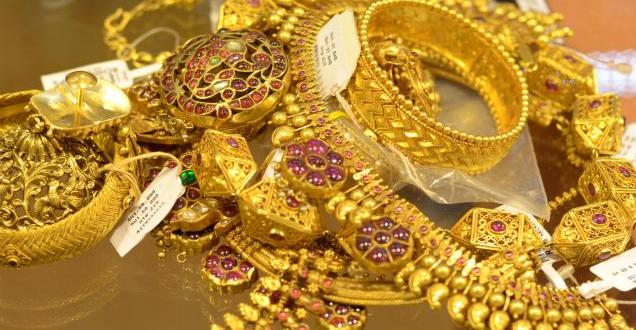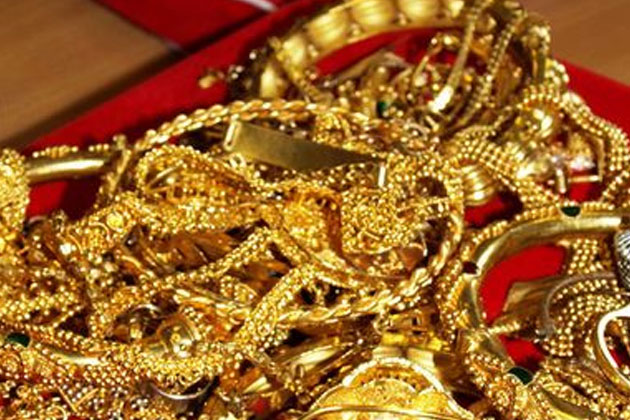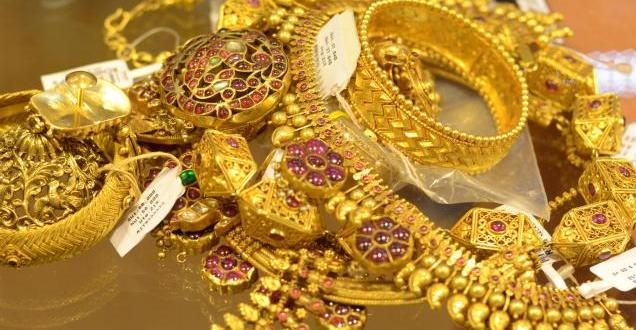Feature
Courier man flees with gold jewellery worth Rs 2.12 cr!

Mumbai: A courier man who worked as a delivery person with a jeweller allegedly ran away with gold valued at Rs 2.12 crore from Kandivali in western suburbs, police said today.
A jeweller, who has his office at Kalbadevi in south Mumbai, had sent his courier man to Hyderabad to bring gold consignment worth Rs 2.12 crore in the last week of May, Deputy Commissioner of Police (Zone-XII), Vinay Rathod said.
The courier man reached Hyderabad on May 29th and on June 3, the jeweller called the 28-year-old courier man on his cell phone as he was expected to arrive in Mumbai with the consignment around 11.30 am, the official said.
The calls were not answered for more than an hour and later when he picked up the call, the suspect told the jeweller that he was robbed and was confused as to where (location) he was.
Initially, he said that he was in Pune, later he said that the incident happened in Mumbai, said the official.
The jeweller then approached police with a complaint alongwith the courier man yesterday, he added.
During the inquiry the courier man was not able to tell the exact location from where he was robbed, another official said.
Initially, he took the police to Kalachowki in central Mumbai, from there they went to Kandivali (east) to ascertain the place, he said.
Police then decided to register an offence of theft against unidentified persons at Samtanagar Police Station in Kandivli, he added.
After not gathering any concrete leads from the courier man’s statement, police decided to verify the facts from the cleaner and the driver of the luxury bus that was used by the courier man to travel to Hyderabad.
The jeweller and the courier man were supposed to visit the police station this morning.
However, the suspect managed to flee when he got a chance, police said.
The jeweller then went to the police station with a complaint against his employee, he said.
Police have registered an offence of criminal breach of trust under section 408 of the IPC and probe is on, the official added.
Entertainment
Meghalaya Reserves Legalized Gambling and Sports Betting for Tourists

The State Scores Extra High on Gaming-Friendly Industry Index
Meghalaya scored 92.85 out of 100 possible points in a Gaming Industry Index and proved to be India’s most gaming-friendly state following its recent profound legislation changes over the field allowing land-based and online gaming, including games of chance, under a licensing regime.
The index by the UK India Business Council (UKIBC) uses a scale of 0 to 100 to measure the level of legalisation on gambling and betting achieved by a state based on the scores over a set of seven different games – lottery, horse racing, betting on sports, poker, rummy, casino and fantasy sports
Starting from February last year, Meghalaya became the third state in India’s northeast to legalise gambling and betting after Sikkim and Nagaland. After consultations with the UKIBC, the state proceeded with the adoption of the Meghalaya Regulation of Gaming Act, 2021 and the nullification of the Meghalaya Prevention of Gambling Act, 1970. Subsequently in December, the Meghalaya Regulation of Gaming Rules, 2021 were notified and came into force.
All for the Tourists
The move to legalise and license various forms of offline and online betting and gambling in Meghalaya is aimed at boosting tourism and creating jobs, and altogether raising taxation revenues for the northeastern state. At the same time, the opportunities to bet and gamble legally will be reserved only for tourists and visitors.
“We came out with a Gaming Act and subsequently framed the Regulation of Gaming Rules, 2021. The government will accordingly issue licenses to operate games of skill and chance, both online and offline,” said James P. K. Sangma, Meghalaya State Law and Taxation Minister speaking in the capital city of Shillong. “But the legalized gambling and gaming will only be for tourists and not residents of Meghalaya,” he continued.
To be allowed to play, tourists and people visiting the state for work or business purposes will have to prove their non-resident status by presenting appropriate documents, in a process similar to a bank KYC (Know Your Customer) procedure.
Meghalaya Reaches Out to a Vast Market
With 140 millions of people in India estimated to bet regularly on sports, and a total of 370 million desi bettors around prominent sporting events, as per data from one of the latest reports by Esse N Videri, Meghalaya is set to reach out and take a piece of a vast market.
Estimates on the financial value of India’s sports betting market, combined across all types of offline channels and online sports and cricket predictions and betting platforms, speak about amounts between $130 and $150 billion (roughly between ₹9.7 and ₹11.5 lakh crore).
Andhra Pradesh, Telangana and Delhi are shown to deliver the highest number of bettors and Meghalaya can count on substantial tourists flow from their betting circles. The sports betting communities of Karnataka, Maharashtra, Uttar Pradesh and Haryana are also not to be underestimated.
Among the sports, cricket is most popular, registering 68 percent of the total bet count analyzed by Esse N Videri. Football takes second position with 11 percent of the bets, followed by betting on FIFA at 7 percent and on eCricket at 5 percent. The last position in the Top 5 of popular sports for betting in India is taken by tennis with 3 percent of the bet count.
Local Citizens will Still have Their Teer Betting
Meghalaya residents will still be permitted to participate in teer betting over arrow-shooting results. Teer is a traditional method of gambling, somewhat similar to a lottery draw, and held under the rules of the Meghalaya Regulation of the Game of Arrow Shooting and the Sale of Teer Tickets Act, 2018.
Teer includes bettors wagering on the number of arrows that reach the target which is placed about 50 meters away from a team of 20 archers positioned in a semicircle.
The archers shoot volleys of arrows at the target for ten minutes, and players place their bets choosing a number between 0 and 99 trying to guess the last two digits of the number of arrows that successfully pierce the target.
If, for example, the number of hits is 256, anyone who has bet on 56 wins an amount eight times bigger than their wager.



























